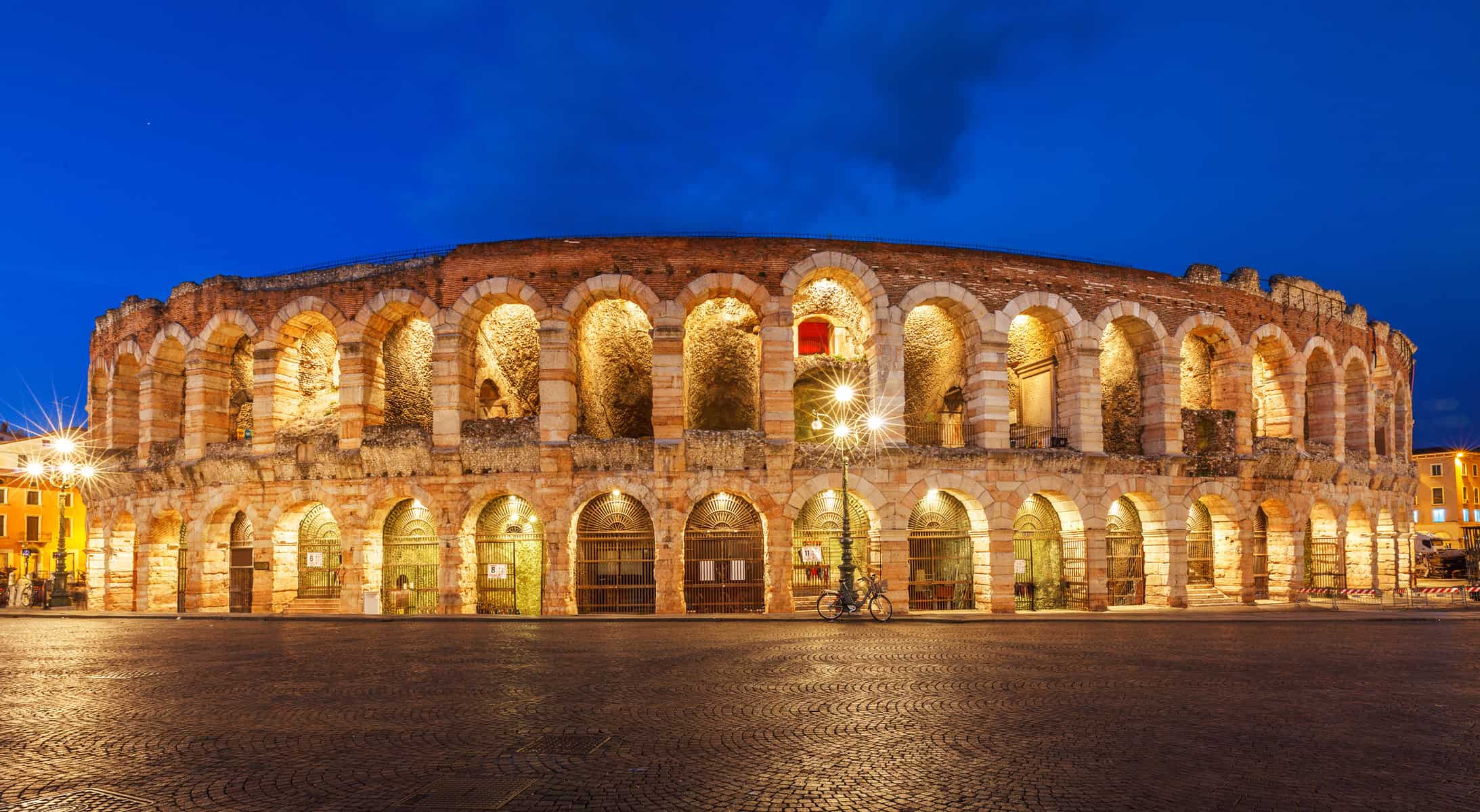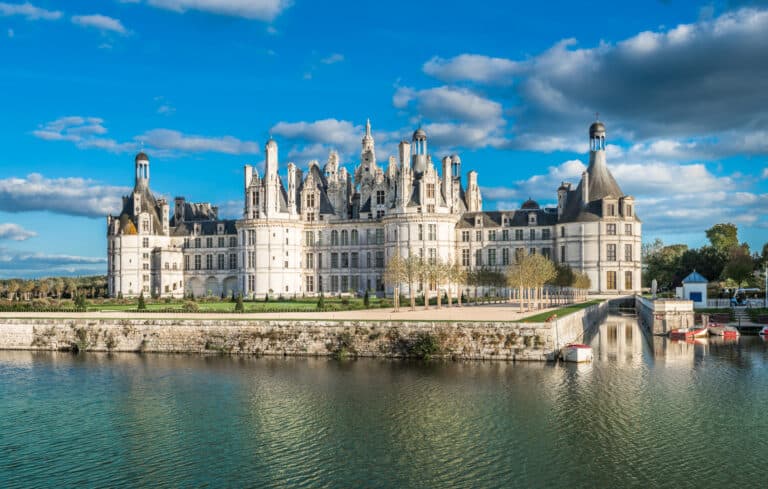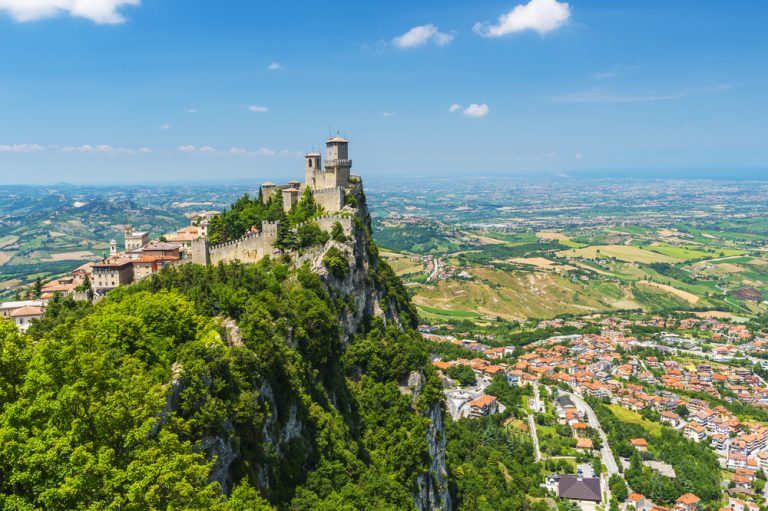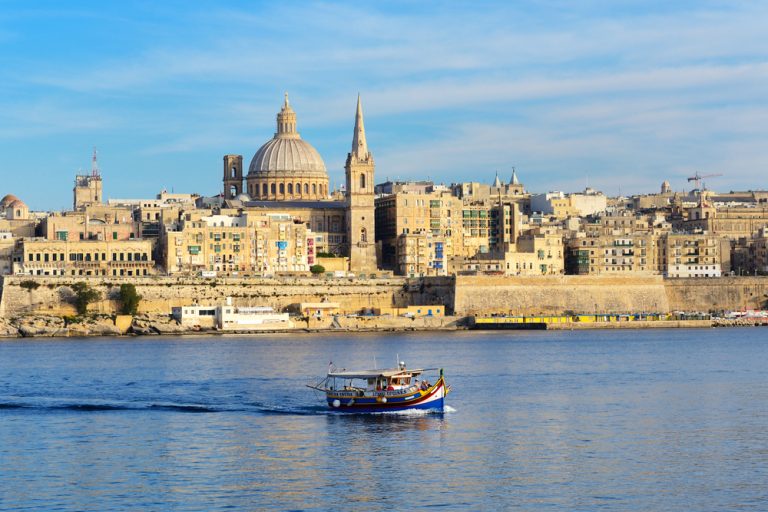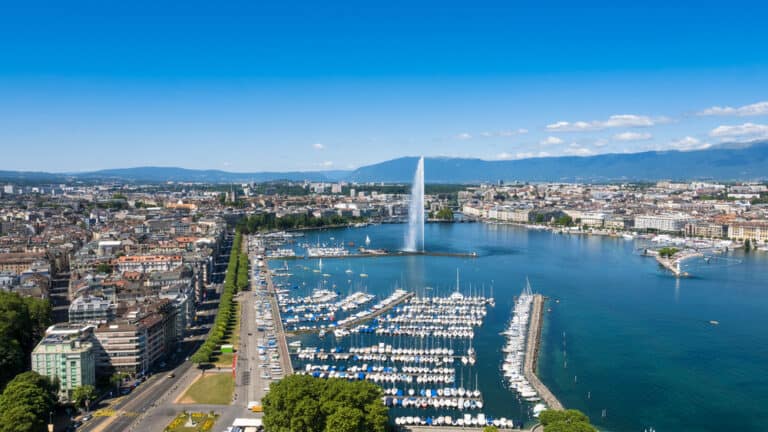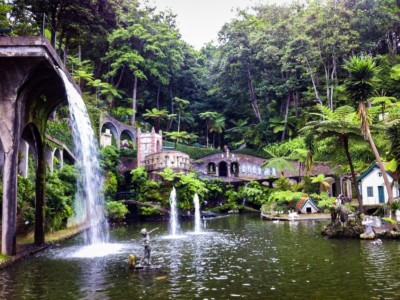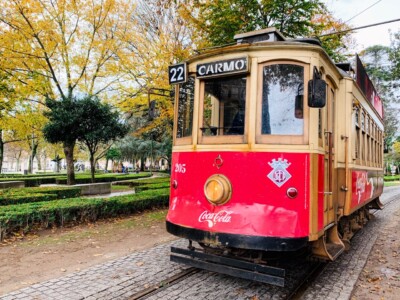2 days in Verona: the perfect itinerary
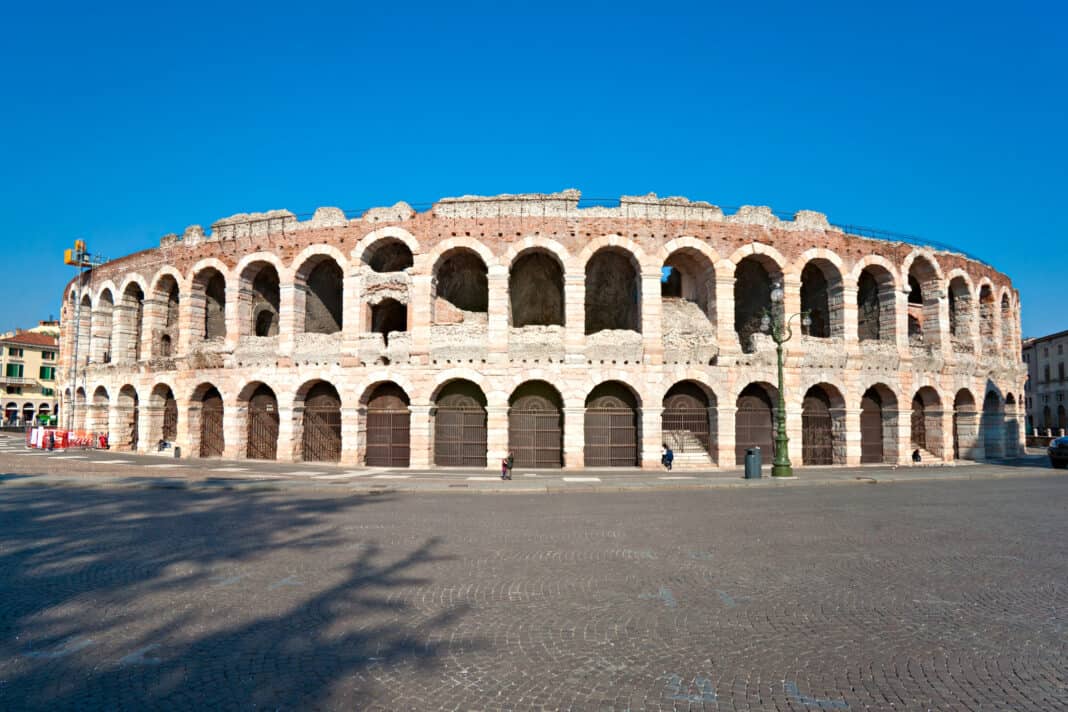
By Emma Marshall
The Oxford Dictionary defines “enchanting” as “delightfully charming or attractive”. Well, Verona is all of these. It’s a small, pretty, medieval city, with cobbled streets that lead you to its handful of must-see attractions.
And it’s hard not to come away from 2 days in Verona or a weekend here without finding something to love.
So if you’re planning a short break to Italy, make sure you put a weekend in Verona on your list. And read on the learn more about what to do with 2 days in Verona.
This post contains affiliate links
Where is Verona?
Verona is a city located in the Veneto province of Northern Italy. It is around 115 km to Venice and 155 km to Milan. The capital, Rome, is further away; the distance between these two cities is just over 500 km.
You can also day trip here from resorts on nearby Lake Garda, from Milan and from Venice.
What to do with 2 days in Verona
The main centre of Verona is not that big. This means that it’s possible to see most of the main sights with just 2 days in Verona.
I found that the best way to see everything was on foot. Even at a leisurely pace, you can easily see most things. It’s a perfect place for short break to Italy.
There are hop-on hop-off buses if you’d prefer not to walk. Click here for more information.
You can also book bike tours of the city if you want to combine sightseeing with a cycle.
An itinerary for 2 days in Verona
There is a variety of things you can do with 2 days in Verona. Read on for the itinerary I followed.
Day 1 in Verona
Start in Piazza Bra
I’d suggest you begin your 2 days in Verona at Piazza Bra. This is the heart of Verona with the Roman Arena sitting majestically in the centre of the square.
Built in the 1st Century AD, the Arena predates the Coliseum in Rome. And it’s still in use: even now it hosts massive concerts for up to 15,000 people. Although astonishingly, in its early life, its capacity was apparently double this.

You can enter the Arena independently for a fee. However, if you would prefer a guided tour to give you a bit more history about the place, you can pre-book entry (click here). This walking tour also offers you skip-the-line entry to the Arena.
Whichever option you choose, it’s definitely worth going inside. When you do this, you get a sense of its scale. It’s huge!
You can also appreciate the wonderful acoustics that has made it such an important entertainment venue throughout the centuries. Every August and September the city hosts an opera festival. Just shout across the Arena to hear the echo of your voice bounce back.
If you feel fit enough, climb to the top of the auditorium. Look back down into the stadium and imagine what it must be like when its full…quite something I would think.
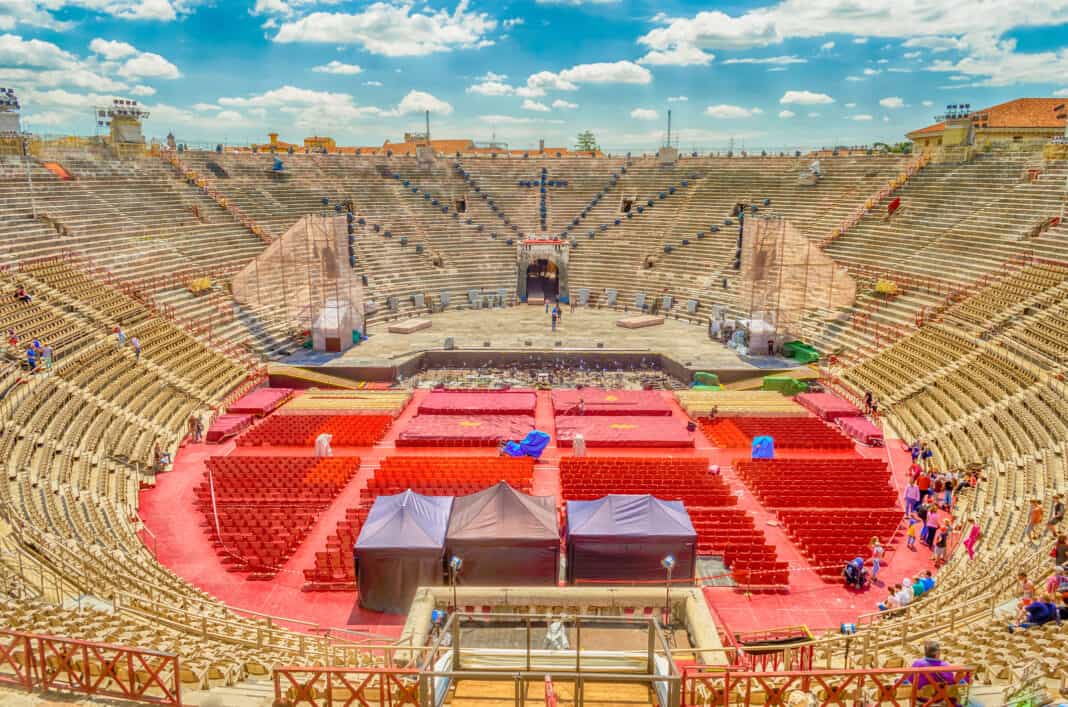
Piazza Bra has a few cafés and retaurants if you’re in need of a stop before moving on. Or alternatively just sit and take in the Arena from a close distance.
Wander to Castelvecchio and La Porta Borsari
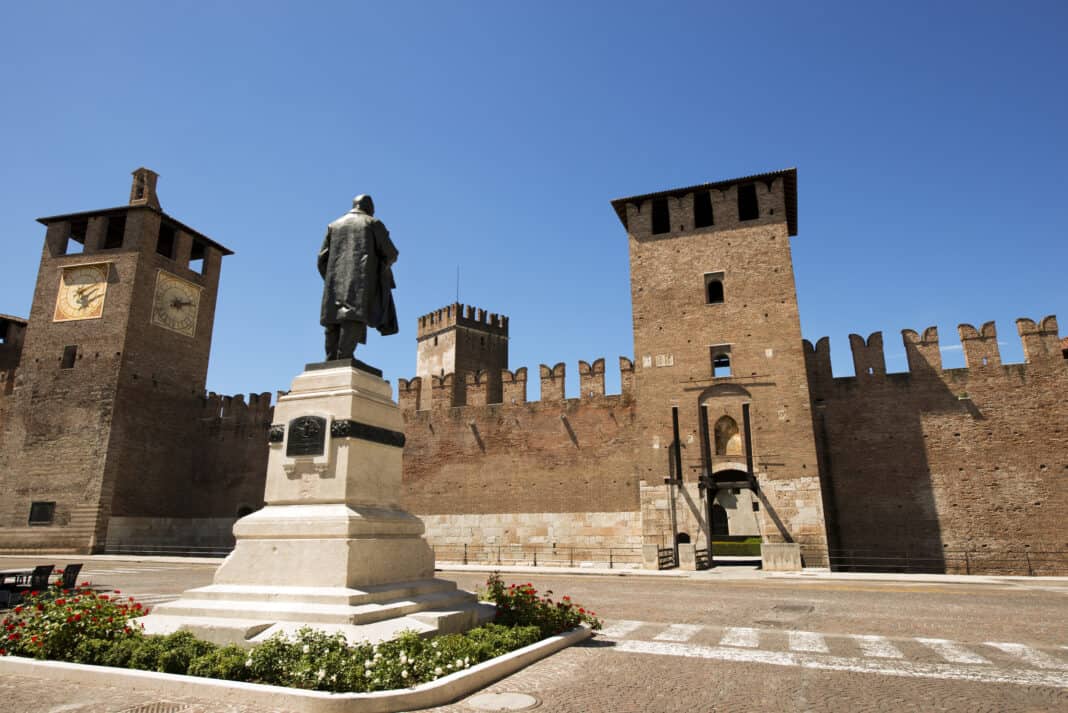
After seeing the Arena, you can then take Via Roma towards Castelvecchio, a small castle by the river. You enter through the drawbridge at the side of the road. From there, you walk into a small courtyard and garden.
The Castelvecchio Museum is also here – an art museum that you can visit for a few euros. Other than this, a visit to the castle is really a quick stop and an opportunity to wander across the bridge that strides the Adige River.
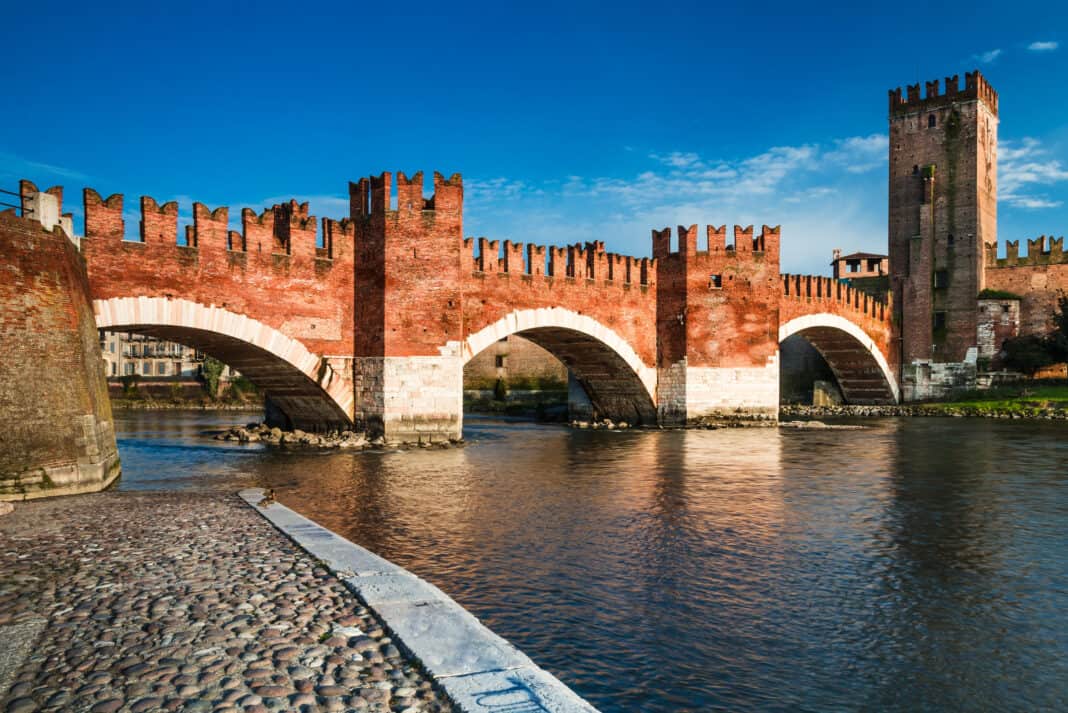
From the castle, follow Corso Cavour up the city gate, La Porta Borsari. This is a magnificent limestone gate which is nearly 2,000 years old. It was once the city’s main entry point.
Stop for lunch at Piazza delle Erbe
Head further up Corsa Porta Borsari (make sure you look up at some of the beautiful buildings lining the street) and turn off at Piazza delle Erbe. This is another potential coffee or lunch stop.
The plaza has a number of cafes and restaurants. These have outdoor seating. In warm weather this is a perfect spot from which to watch people perusing the small market located in the square next to the fountain.
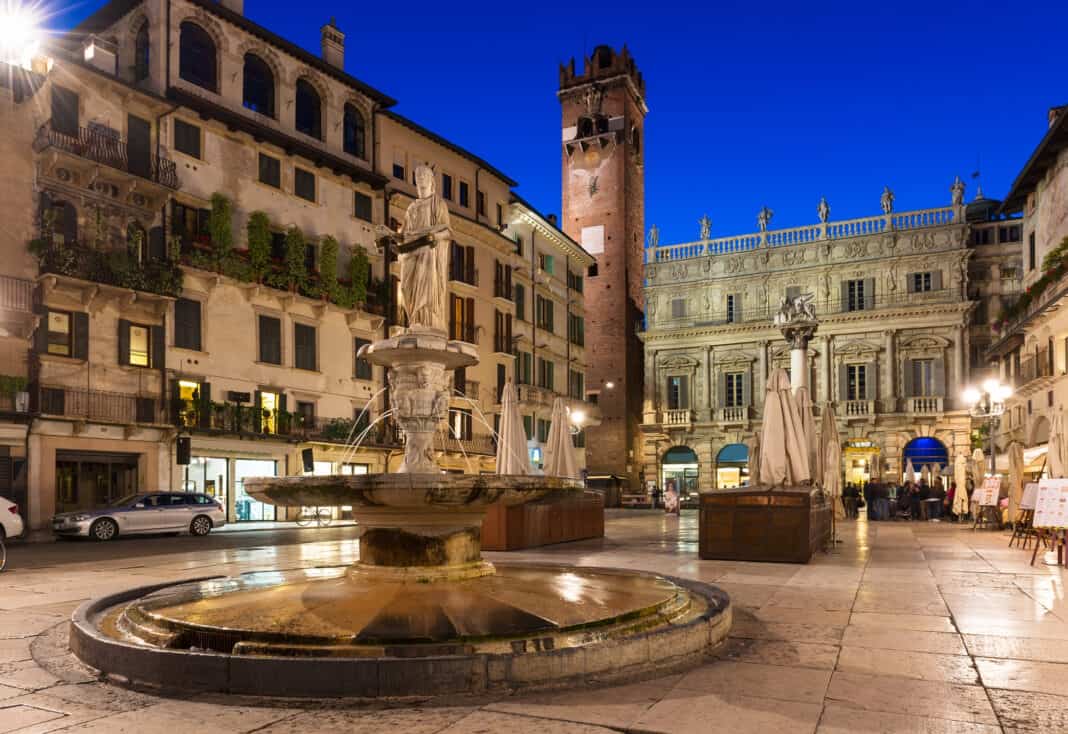
Climb the Torre dei Lamberti
When you’re in the Piazza delle Erbe, look up. You’ll then see the Torre dei Lamberti. This is a Romanesque style tower dating back to 1172. It is 84 metres high and has 368 steps to the top (you can also take an elevator).
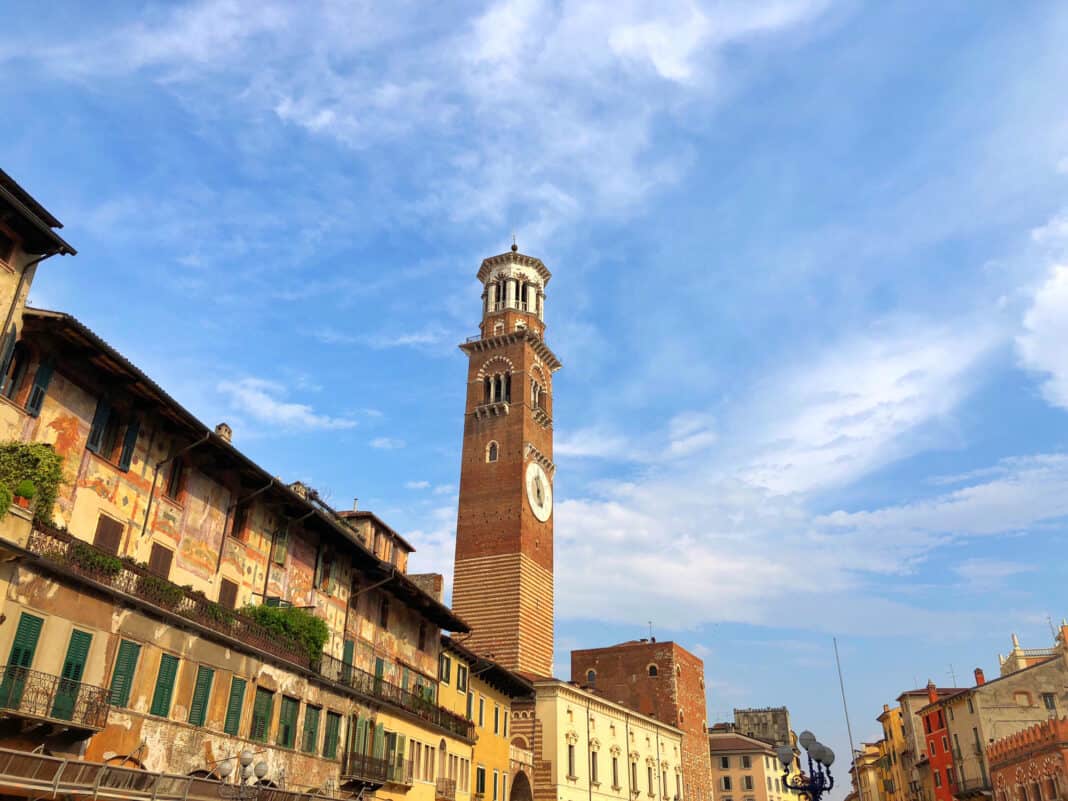
Pop into Piazza dei Signori
After leaving the tower, pop into Piazza dei Signori. You’ll find this through the stone archway on a side street off the square. I loved this wide open square with its statute of Dante.
Maybe it was the fact that it was deserted (something I discovered is pretty rare in central Verona) or the elegant buildings framing the square. Whichever one it was, I thought it was beautiful here.
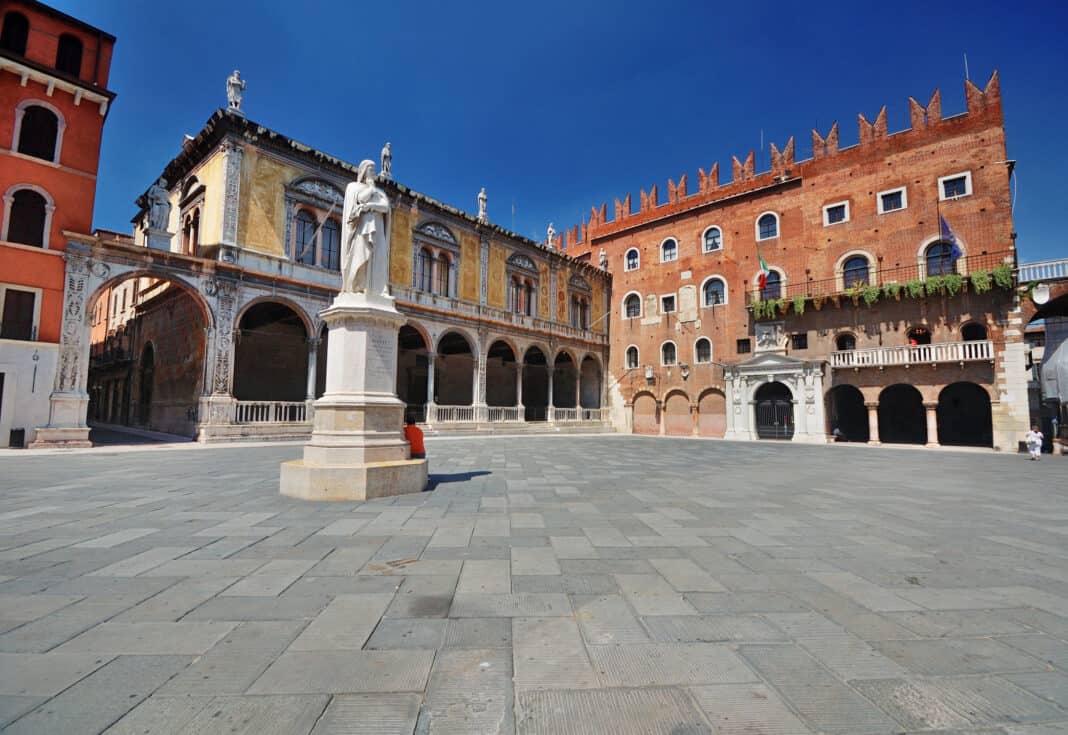
Go shopping in Via Mazzini
If you then fancy a spot of shopping, take a stroll down Via Mazzini. This is an attractive street with some really quite elegant shops on it. I’m sure you could spend a small fortune here if you wanted to! Otherwise, you can shop for some souvenirs to take home.
When you reach the end of the street, you will be back near the Arena. You might want to stop here for the day and have some early evening cocktails while planning your evening meal. Fortunately, there’s no shortage of eateries here, as you’ll notice when you wander around.
Day 2 in Verona
See Juliet in Casa di Giulietta
I’d recommend starting the second if your 2 days in Verona by going straight to Casa di Giulietta (Juliet’s Balcony). But my advice would be to get here as early as possible.
Despite Juliet being a fictional character, this is the place where she is said to have lived. Its location – on Via Cappello – has been linked to the Capulet family in ‘Romeo and Juliet’ and Verona is one of the settings for Shakespeare’s famous play.
Not surprisingly, it’s a massive tourist draw. It can therefore get very crowded. Going early or late in the day improves your chances of being able to soak in the surroundings. There are less people around – and importantly, you can snap some pictures tourist free.
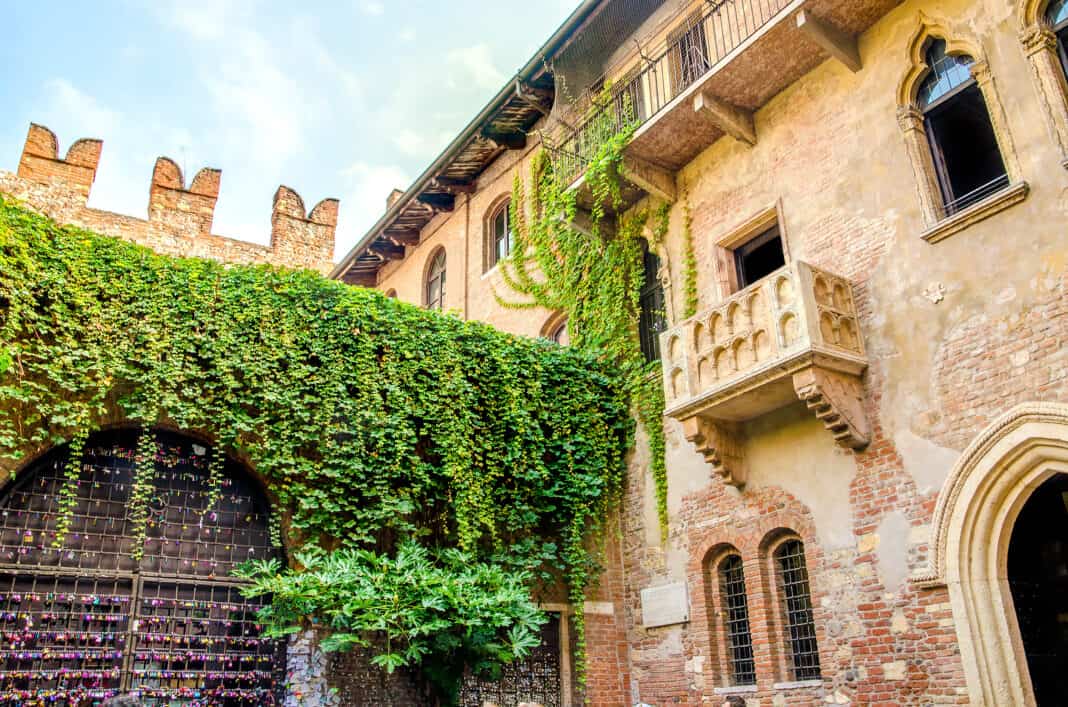
Take the opportunity when it’s quiet to step under the archway. Gaze up at the famous balcony and look at the bronze statue of Juliet in the courtyard.
And make sure you stop for a few moments to gaze at the walls of the archway. These are are littered with post-it notes with messages of love scrawled across them – Verona’s version of love locks on a bridge I guess.
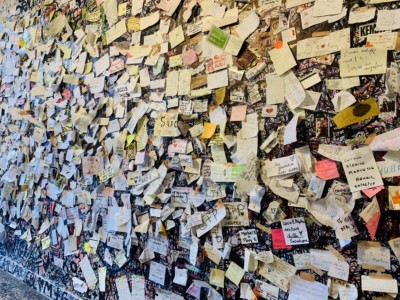
Go into Juliet’s house and peer out from the balcony
If you have a bit more time, there is also a small museum in Juliet’s house. This is worth seeing and I enjoyed wandering around this this. Inside, there are various rooms where you can admire the art and period furniture.
You can also read various excerpts that have been reproduced from ‘Romeo and Juliet’. The bed that was used in Franco Zeffirelli’s 1968 version of the play is also on display.

Last but not least, make sure you stand on the balcony and peer out over the small courtyard below as Juliet might have done. This is a popular place to take pictures.
Walk to the Duomo
Not far from Casa di Giuletti and next to the river is the Duomo. You can walk here through the city’s streets.
Head for Ponte Garibaldi and then veer off to the right before you cross the bridge. Or alternatively you could reach this by going towards Ponte Nuovo and then following the river around.
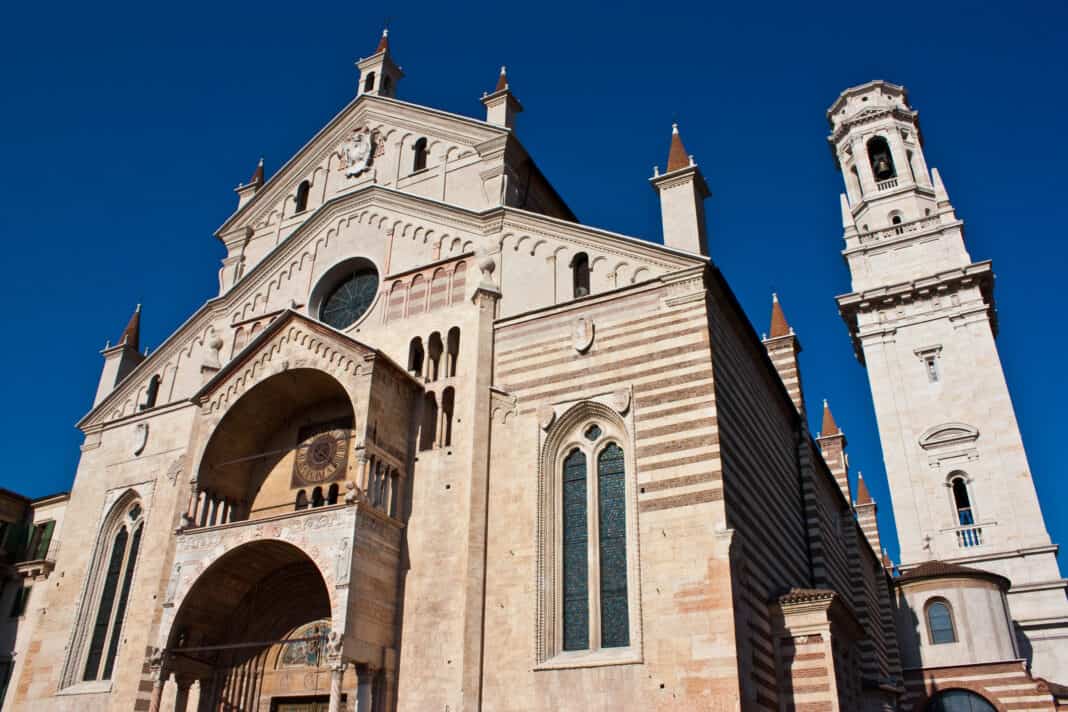
This is a huge – and stunning – Catholic cathedral. It is definitely worth the small entrance fee to go inside. The interior is stunning. The fee also includes provision of a handheld audio guide that gives you more information on the building’s history and design as you walk around.
See Verona’s oldest bridge, the Ponte Pietra
After leaving the Duomo, make your way to the Ponte Pietra. This is the oldest bridge in Verona. There are a few cafes and restaurants here where you could stop for coffee or lunch.
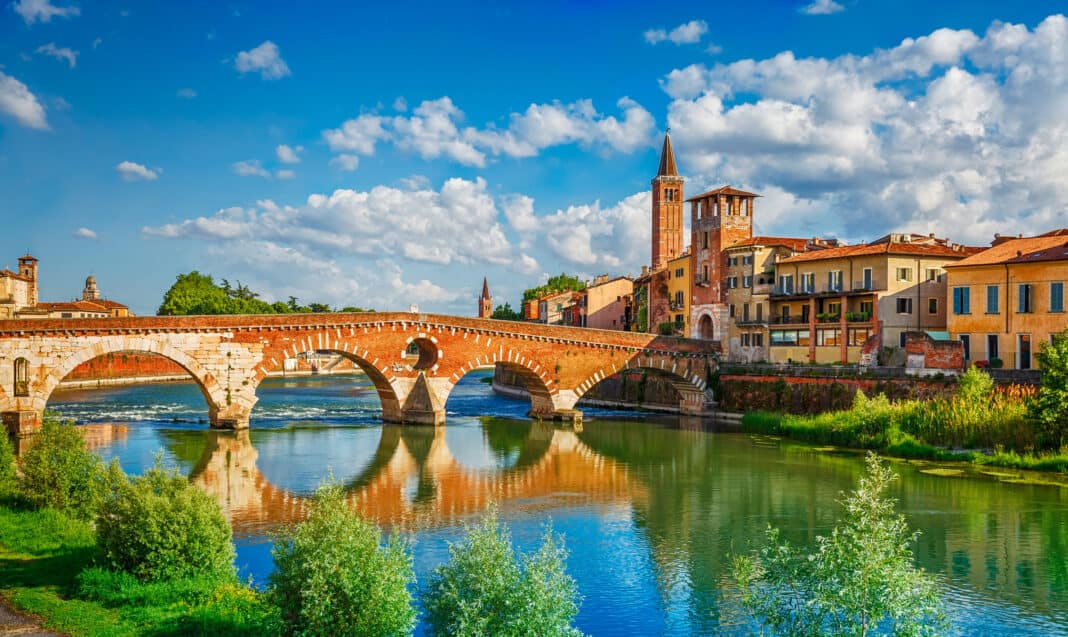
The bridge has a string of arches through which the water flows and is a mix of coloured stone.
You step onto it via an archway in a tower on the side of the river. From this vantage point, you can look across to the opposite bank.
Here, you’ll see colourful Veronese buildings sitting below tall cypresses. And on the hill above, there is a castle perched on the summit. To the left, you’ll also see the Duomo looming large a little further down the river.
Then cross the bridge. Only then – when you turn around and look back – will you appreciate how beautiful it is.
I spent quite a bit of time standing by the bridge taking in the panoramic views of the city and bridge. This was one of my favourite spots in Verona.
See the Teatro Romano and climb to Castel San Pietro
Once you’ve crossed the Ponte Pietra, you’re then a stone’s throw away from the Teatro Romano (Roman Theatre). Predating the Arena, only ruins now remain on the side of the hill. There is also an archaeological museum.
I didn’t go into either but reviews say this is worth doing. I was running out of time on my trip, so decided instead to climb further up the hill to Castel San Pietro. You can go via a stone staircase or take a funicular to the top.
At the summit, two things are striking. First, how modest the castle is. It’s a really rather plain building surrounded by a pathway. It doesn’t appear to be a building that you can go into. Second, that the views over the city are incredible.
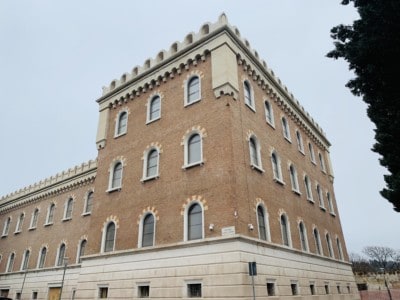
You can see right over the river in both directions, and back across the city above the Ponte Pietra bridge. Although you may initially be slightly disappointed by the castle, you definitely won’t be disappointed by the views you are afforded from this vantage point.
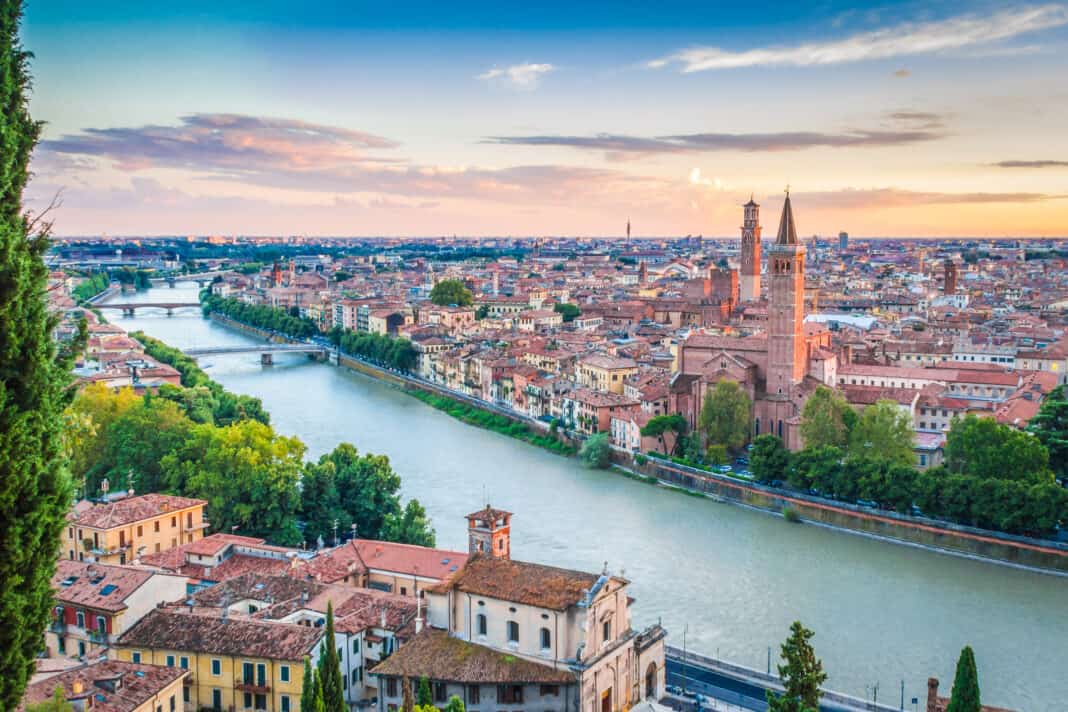
If you only have 2 days in Verona, this may be the end of your trip. If this is the case, take a leisurely stroll down from the castle, back across the bridge and into the city centre.
Then if you have time, have one last stop in one of the wonderful eateries – be that a final plate of pasta, torta, gelato or vino. This is a perfect opportunity to reflect on your time in a delightful Italian city.
2 days in Verona
I hope you find Verona as enchanting as I did. If you’re looking for other Italian city breaks or trips, check out some of my other posts which include:
For more European city break ideas, click here.

